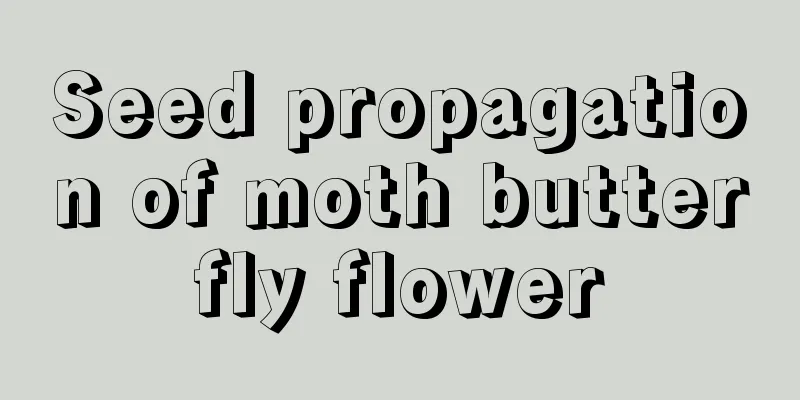Cultivation methods and precautions of Patrinia salsa

1. Maintenance methods1. Temperature: The temperature for maintenance should be controlled at around 20 degrees. If the temperature is too high, it will affect its health. If the temperature is too low, it will stop growing. Therefore, when maintaining it, you must follow its temperature requirements. 2. Watering: It is a relatively drought-resistant plant, but after successful planting, it needs to be watered with sufficient water in order to promote its rapid germination. It should be noted that the amount of watering must be controlled so that water cannot accumulate in the soil. Under normal circumstances, if the temperature does not exceed 30 degrees, water it once or twice a week. If the temperature is higher than 30 degrees, water it every other day. 3. Fertilization: When applying fertilizer, it should be decided according to its growth conditions. If the branches and leaves turn yellow, you need to use compound fertilizer. If the plant is not tall, you need to use phosphorus fertilizer. If the plant is growing normally, there is no need to fertilize for the time being. If fertilizer is to be applied, it is usually done after watering. At this time, the soil is soft and moist, which is conducive to plant absorption. It can also reduce the concentration of fertilizer and avoid root burn. 4. Light: It is a sun-loving plant and requires sufficient light to meet its needs. It can accept full-day sunshine. 2. Breeding techniques1. Reproduction: It can be propagated by seeds. The time for reproduction is in spring. Bury the seeds in soil holes. Keep the distance between each hole about ten centimeters to avoid too dense growth, which will affect the absorption of nutrients. 2. Pruning: Generally speaking, it does not require pruning. You only need to prune off the dead branches and leaves. 3. Problem Diagnosis1. Pests: Aphids, whiteflies, and flea beetles are the most susceptible pests to Patrinia salsa. They will eat the branches and leaves of the plant and affect the growth of the plant. If found, it is necessary to spray it with imidacloprid powder. It should be noted that because Patrinia salsa is a traditional Chinese medicine, it is necessary to avoid using highly toxic agents such as DDT when controlling pests. 2. Disease: If the branches and leaves turn white and yellow, it is mostly due to insufficient light. You need to increase the light. For plants grown in the north, it is best to grow them in a sunny place so that they can get as much light as possible. IV. Other issues1. Edibility: It cannot be eaten directly, but it can be used as a medicinal material and is the raw material for many medicines. 2. Can it be raised at home: It can be raised at home, but it is best to raise it in places such as balconies, which is good for its growth. |
<<: How to grow banana and what to pay attention to
>>: Cultivation methods and precautions of leopard arrowroot
Recommend
Is potato a fruit or a vegetable?
Are potatoes a fruit or a vegetable? Potatoes are...
How to plant a palm tree in a pot
1. Maintenance methods 1. Soil: When growing palm...
The lucky bamboo in his family grew into a 9-story pagoda, which brought him great luck and wealth!
Pagoda shape: the most auspicious shape What is a...
The efficacy and function of mango
effect The vitamin C content of mango is much hig...
Does holly bloom?
Does holly bloom? Holly will bloom, and the flowe...
How to propagate Michelia chrysantha
Time of reproduction This plant mainly propagates...
When is the best time to plant morning glory seeds?
Morning glory seed planting time Morning glory is...
When is the best time to plant watermelon seeds?
Watermelon seed planting time Watermelon is an an...
How to cultivate the fortune tree to make it more prosperous
Growing conditions of the fortune tree The money ...
Grapefruit seed germination conditions and planting requirements
1. Seed germination conditions If you want the gr...
How to make passion fruit bloom quickly and how long does it take for it to bear fruit?
1. Rapid flowering method 1. More light: Passion ...
How to grow daylilies on the balcony and what to pay attention to
1. Lighting Daylily is a plant that loves sunligh...
The efficacy and function of carambola
1. Provide Nutrition It is rich in sugar, vitamin...
How to prune Kalanchoe and its illustrations
Kalanchoe pruning time Kalanchoe is usually prune...
Why can't Epiphyllum be given as a gift? Why can't Epiphyllum be kept at home?
Although the night-blooming cereus is beautiful, ...









